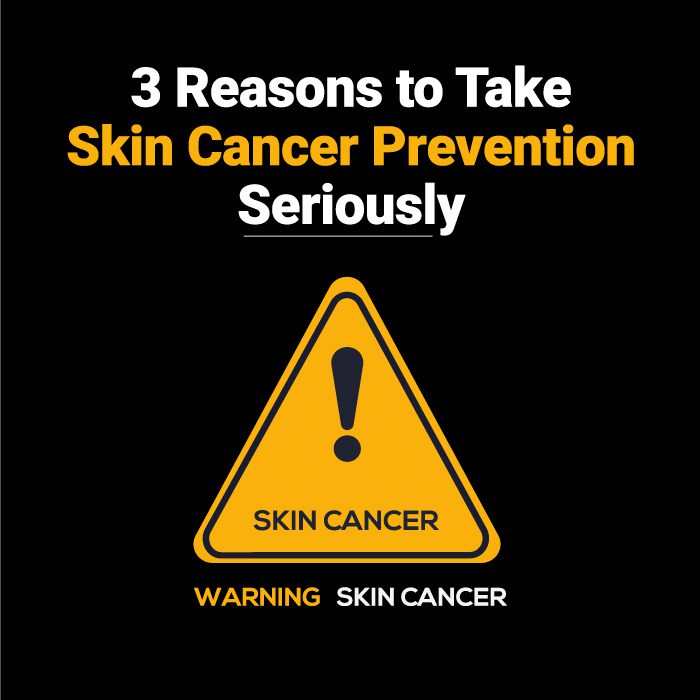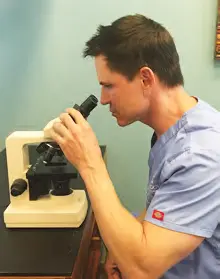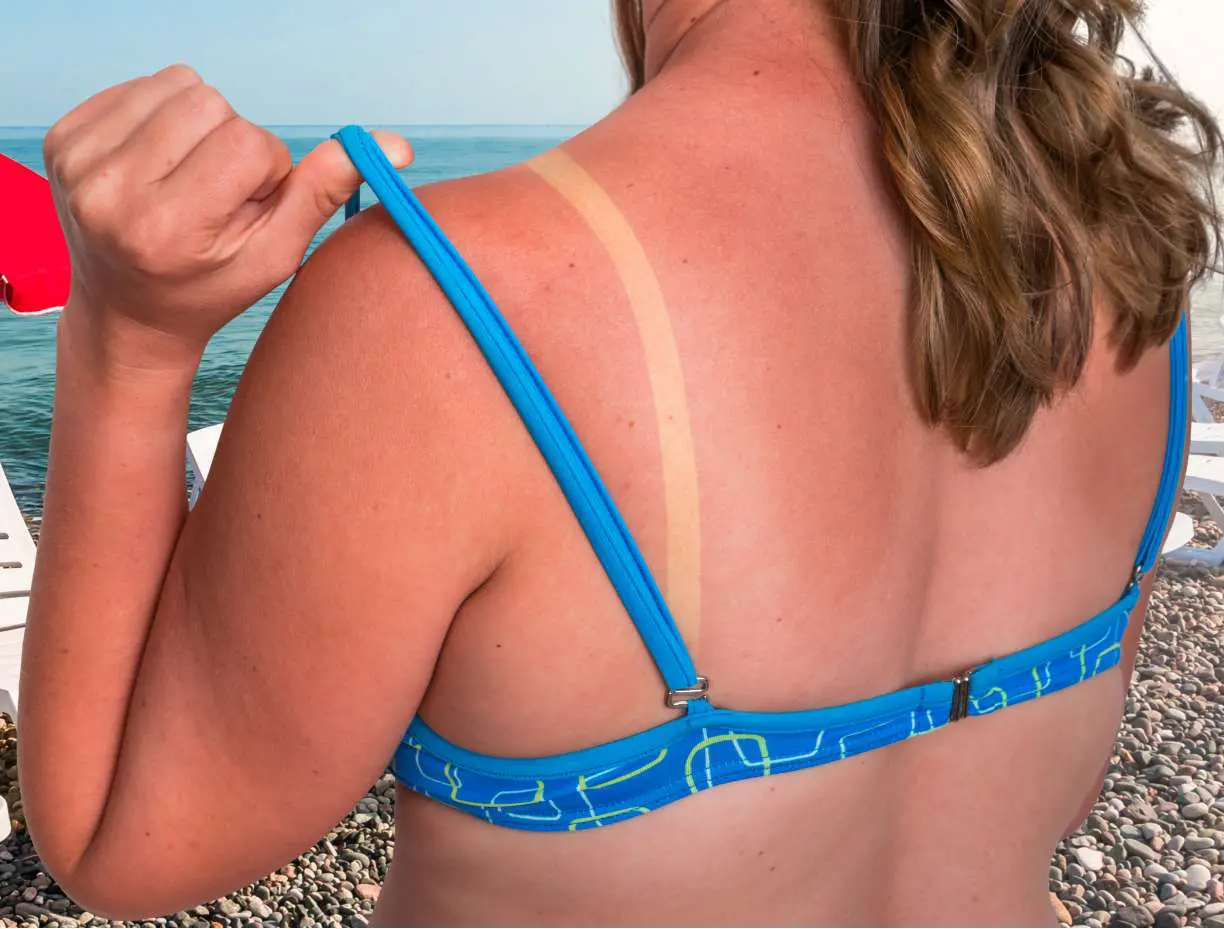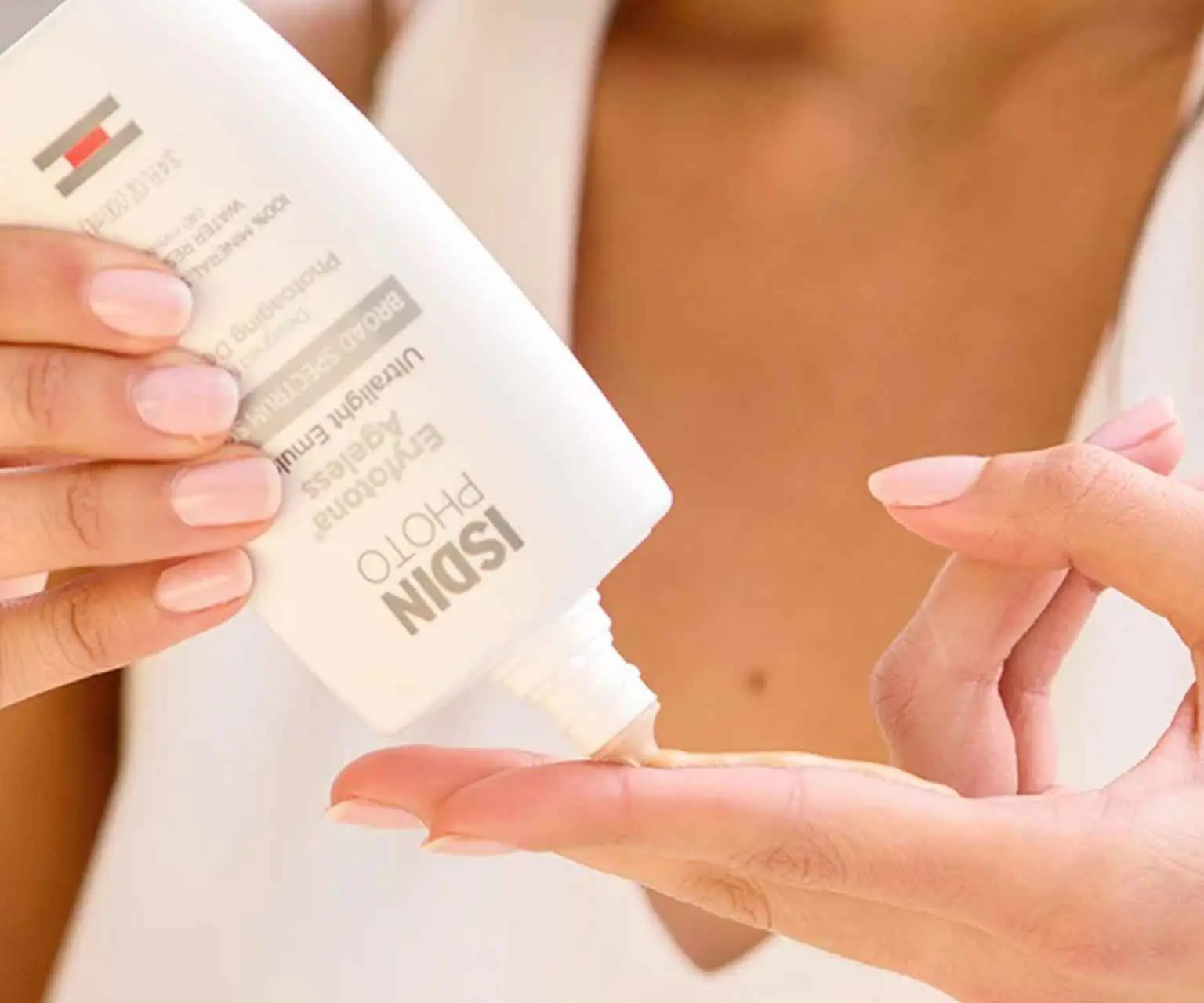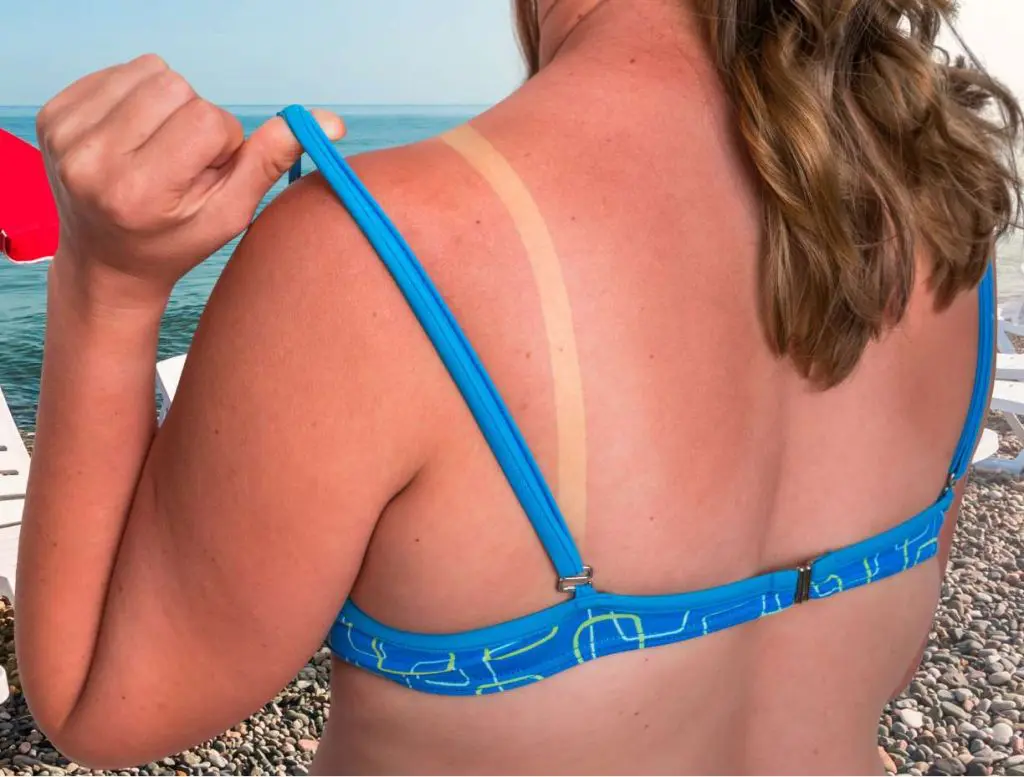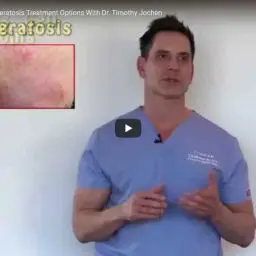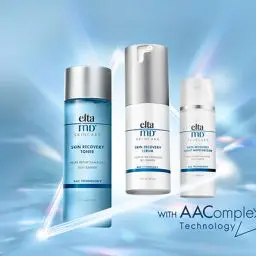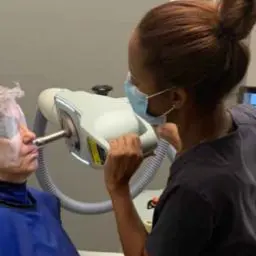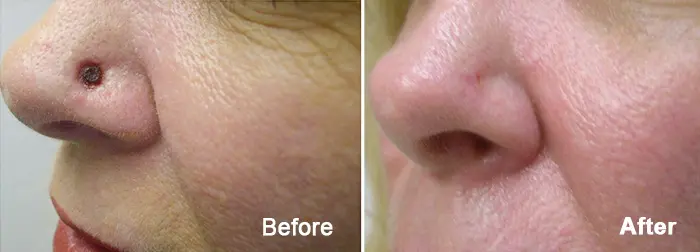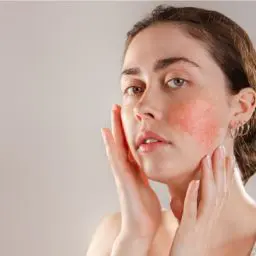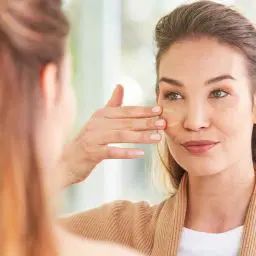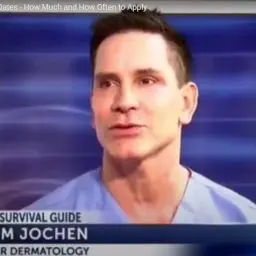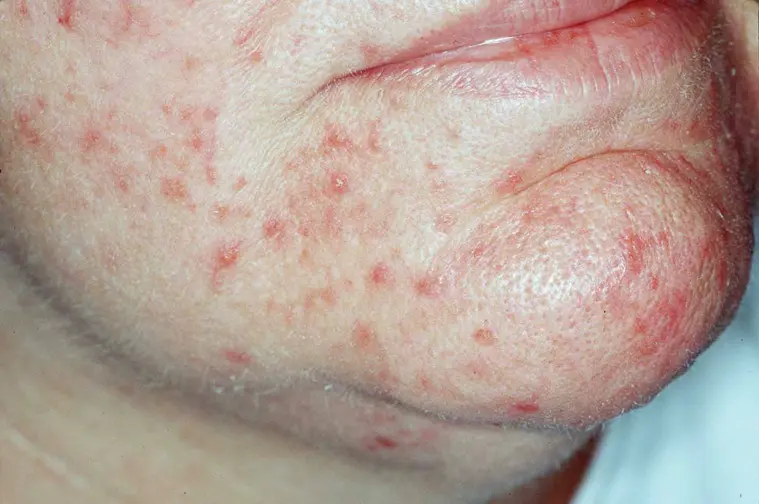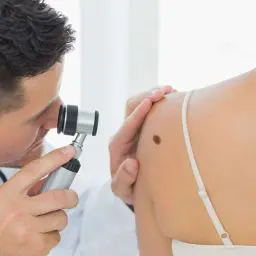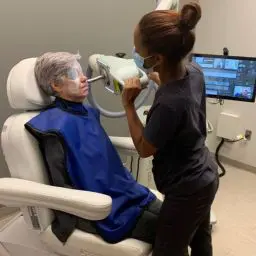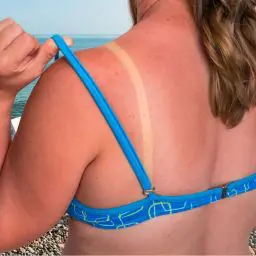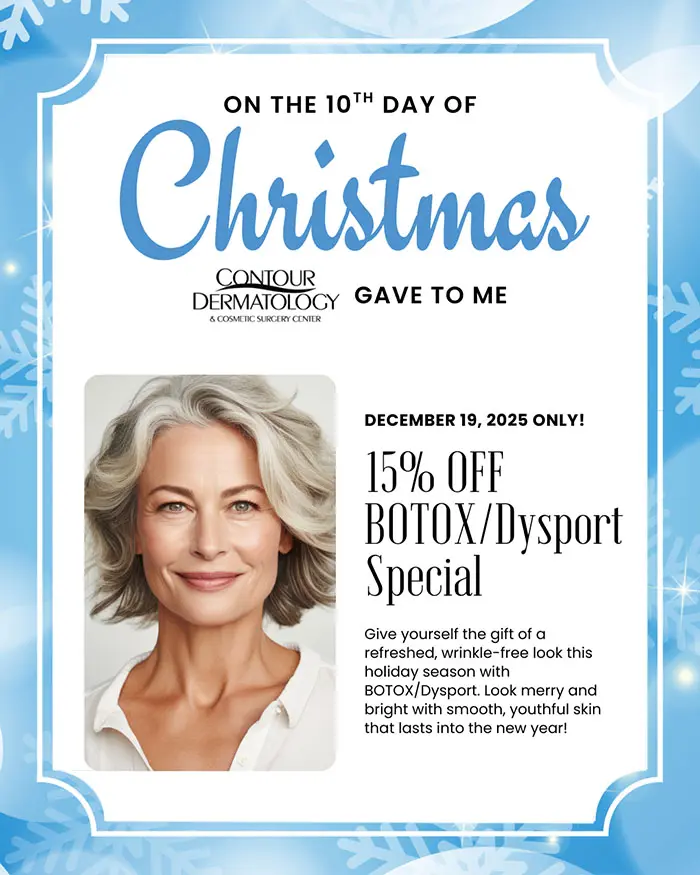Don’t Be a Skin Cancer Statistic
3 Reasons to Take Skin Cancer Prevention Seriously
Let’s talk about sun safety: Tips to keep you and your loved ones safe, what to look for in sunscreen, and treatment should it be necessary.
Practice Skin Cancer Prevention
It’s so much more fun to talk about fun in the sun. But this May, we want to share a few tips for sun protection as it is Skin Cancer Awareness Month. Sadly, skin cancer is very common, and while it’s never a welcome diagnosis, it is largely treatable with high-cure rates when caught early. And, even with melanoma, when detected early, the 5-year survival rate is 99 percent.
Don’t Be a Skin Cancer Statistic
We do not share these stats to alarm you, but rather for forewarn you and inspire better sun protection and to encourage you to get an annual skin cancer screening.
- 1 in 5 Americans will develop skin cancer by the age of 70.
- More than 2 people die of skin cancer in the U.S. every hour.
- Having 5 or more sunburns doubles your risk for melanoma.
If you want to dive deeper into more statistics, click below for the latest skin cancer facts and statistics.
What if it is Skin Cancer?
The good news is if you or a loved one are diagnosed with skin cancer, we have multiple options for treating skin cancer at Contour Dermatology, including surgical and non-surgical options. Of course, it depends on the location of the skin cancer and the depth.
Mohs Surgery for Skin Cancer Removal
Dr. Timothy Jochen is an expert in Mohs surgery and has special certification from the American Board of Dermatology in micrographic dermatologic surgery. Mohs surgery is not recommended for melanoma, but it is very effective for squamous and basal cell carcinoma.
Image-Guided Superficial Radiotherapy Treatment
In addition to Mohs surgery, we offer treatment with low-dose, superficial radiation therapy to treat the area, which does not involve any cutting or stitches. The device we utilize is by SkinCure Oncology and it utilizes ultrasound imaging to view the area being treated. What can patients expect with SRT results? The results are similar to Mohs surgery. The SRT 100 has a 99.7% cure rate. Which treatment is best for you is something that you and your provider can discuss. The good news is, you now have more options, and both offer excellent healing results.
Treatment of Pre-Cancerous Skin Lesions
We also treat actinic keratosis (AKs) which can turn into skin cancer. The Blu-U-photodynamic therapy device is what we use to treat AKs.
But PREVENTION is always best. You can’t undo the bad sun habits you may have had years ago. But you can be more precautious NOW. You can be diligent about getting an annual skin cancer screening and teaching your children good sun safety habits. Keep reading for sun-protection tips.
About 5.4 million cases of skin cancer will be diagnosed this year among 3.3 million Americans, according to the American Cancer Society. Did you know that five or more sunburns between the ages of 15 and 20 raise a person’s risk of melanoma by 80%? And it also increases the risk of basal cell or squamous cell carcinoma by 68%?
Sun Safety Tips
So, the first tip is to do whatever you can to avoid sunburns. And while all sunburns are bad, it’s the blistering kind that tends to lead to skin cancer.
Watch your sun exposure. Avoiding the sun in our sun-drenched desert is nearly impossible. And the sunshine is a primary reason people love to live here. Just avoid lengthy exposure during the peak hours of 10 a.m. to 4 p.m. If you’re at the beach or some other climate that is cooler than the desert, it’s even more important to monitor your exposure because it won’t feel as hot.
Use multiple layers of protection, including sunscreen, sun-protective clothing, hats, sunglasses, and seek shade when possible or intermittently to reduce intense exposure. And, yes, you still should apply sunscreen if you are wearing sun protective clothing or beach cover-ups.
Remember, sunscreen is like wisdom – it only works when you apply it and reapply it.
What to Look for in a Sunscreen?
So, the first tip is to do whatever you can to avoid sunburns. And while all sunburns are bad, it’s the blistering kind that tends to lead to skin cancer.
Watch your sun exposure. Avoiding the sun in our sun-drenched desert is nearly impossible. And the sunshine is a primary reason people love to live here. Just avoid lengthy exposure during the peak hours of 10 a.m. to 4 p.m. If you’re at the beach or some other climate that is cooler than the desert, it’s even more important to monitor your exposure because it won’t feel as hot.
Use multiple layers of protection, including sunscreen, sun-protective clothing, hats, sunglasses, and seek shade when possible or intermittently to reduce intense exposure. And, yes, you still should apply sunscreen if you are wearing sun protective clothing or beach cover-ups.
Remember, sunscreen is like wisdom – it only works when you apply it and reapply it.
Ingredients – Spray sunscreens that contain benzene have been recalled by the FDA. Still in use, Oxybenzone is also a concern. Be sure to read the labels carefully. Look for titanium dioxide and zinc oxide as active ingredients in mineral formulas. With chemical sunscreens, look for no parabens and no fragrance as fragrance can irritate some people. While some people ascribe to the fewer ingredients the better philosophy, that’s not necessarily true when it comes to some of the physician-grade brands we offer that include excellent anti-aging ingredients. Several of them contain an abundance of antioxidants and healing extracts that will help your skin repair prior sun damage while it protects you today.
Broad-spectrum – You want your sunscreen to protect you against both UVA (the kind of rays that contribute to wrinkles and premature aging) and UVB rays (the wavelength that produces sunburns.)
Water-resistant – If you plan on being active or in the water, a water-resistant formula is a good idea. According to the new FDA labeling, no product can claim it’s waterproof, but they may claim water-resistant, which typically is up to 80 minutes before you need to reapply.
SPF – Today, most sunscreens have high sun protection factors, but we recommend at least an SPF of 35. There are misconceptions about what SPF means as far as how long you can stay out in the sun. Here’s a great explanation on SPF from the FDA that’s worth your time to click and read.
Tint – Why mention tint? Because compliance is a key factor. If you love your sunscreen, you’ll use it regularly. Some people appreciate a tinted sunscreen and even use it instead of makeup.
Visit our Skincare Store to stock up on sunscreen.
Contact us to schedule a skin cancer screening or perhaps to discuss removing some visible effects of photoaging with lasers.
Best wishes for a sun-safe, happy summer!


